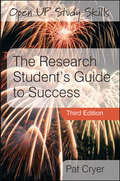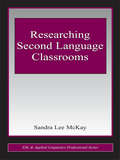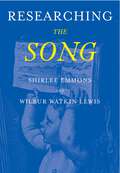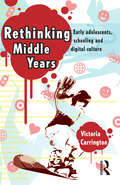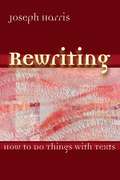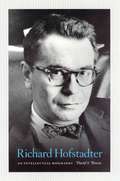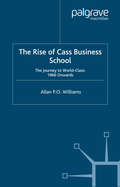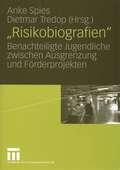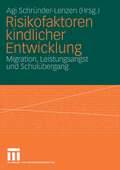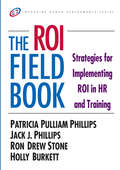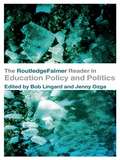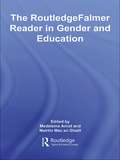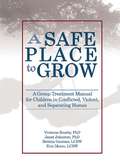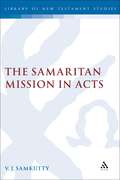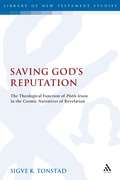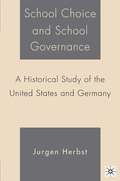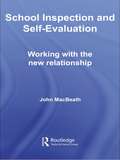- Table View
- List View
The Research Student's Guide to Success (UK Higher Education OUP Humanities & Social Sciences Study Skills)
by Pat CryerA must read for all research students!“The core material in Professor Cryer’s previous editions is classic. I welcome this new edition setting it into current contexts.” – PhD supervisor“When I was doing my own PhD, Pat Cryer’s book was my constant reference companion. Now I am recommending her latest edition to my own students.” – PhD supervisorInsightful, wide-ranging and accessible, this is an invaluable tool for postgraduate research students and for students at all levels working on research projects, irrespective of their field of study.This edition has been thoroughly revised to accommodate the changes in postgraduate education over recent years. Additional material and new emphases take into account:the QAA Code of Practice for Postgraduate Research Programmesrecommendations of the Roberts Reviewthe needs of the growing number of ‘overseas’ research studentsemployment issues (including undergraduate teaching)the Internet as a resource for research. There are new chapters on:developing the research proposalsucceeding as an ‘overseas’ research studentethics in researchpersonal development planning (PDP)
Researching Second Language Classrooms
by Sandra Lee MckayThis text introduces teachers to research methods they can use to examine their own classrooms in order to become more effective teachers. Becoming familiar with classroom-based research methods not only enables teachers to do research in their own classrooms, it also provides a basis for assessing the findings of existing research. McKay emphasizes throughout that what a teacher chooses to examine will dictate which method is most effective. Each chapter includes activities to help readers apply the methods described in the chapter, often by analyzing research data.*Chapter I, Classroom Research, introduces the reader to major research purposes and research types as they relate to classroom research, the distinction between quantitative and qualitative research, the formulation of research questions and research designs, and ethical issues in research.*Chapter II, Researching Teachers and Learners, presents research methods that can be used to examine teachers' and learners' attitudes and behaviors: action research, survey research, interviews, verbal reports, diary studies, case studies, and ethnographies.*Chapter III, Researching Classroom Discourse, deals with methods that can be used to study the oral and written discourse of classrooms: interaction analysis, discourse analysis, text analysis, and ways to examine the social and political assumptions underlying the choice and presentation of content in second language teaching materials.*Chapter IV, Writing Research Reports, provides guidelines for both thesis writing and journal articles.Researching Second Language Classrooms is an ideal text for TESOL research methods courses and an essential resource for inservice teachers who wish to undertake classroom research.
Researching Second Language Classrooms
by Sandra Lee MckayThis text introduces teachers to research methods they can use to examine their own classrooms in order to become more effective teachers. Becoming familiar with classroom-based research methods not only enables teachers to do research in their own classrooms, it also provides a basis for assessing the findings of existing research. McKay emphasizes throughout that what a teacher chooses to examine will dictate which method is most effective. Each chapter includes activities to help readers apply the methods described in the chapter, often by analyzing research data.*Chapter I, Classroom Research, introduces the reader to major research purposes and research types as they relate to classroom research, the distinction between quantitative and qualitative research, the formulation of research questions and research designs, and ethical issues in research.*Chapter II, Researching Teachers and Learners, presents research methods that can be used to examine teachers' and learners' attitudes and behaviors: action research, survey research, interviews, verbal reports, diary studies, case studies, and ethnographies.*Chapter III, Researching Classroom Discourse, deals with methods that can be used to study the oral and written discourse of classrooms: interaction analysis, discourse analysis, text analysis, and ways to examine the social and political assumptions underlying the choice and presentation of content in second language teaching materials.*Chapter IV, Writing Research Reports, provides guidelines for both thesis writing and journal articles.Researching Second Language Classrooms is an ideal text for TESOL research methods courses and an essential resource for inservice teachers who wish to undertake classroom research.
Researching the Song: A Lexicon
by Shirlee Emmons Wilbur Watkins LewisSingers are faced with a unique challenge among musicians: they must express not just the music, but the lyrics too. To effectively communicate the meaning behind these words, singers must understand the many references embedded in the vast international repertoire of great art songs. They must deal with the meaning of the lyrics, frequently in a language not their own and of a culture unfamiliar to them. From Zelter and Schubert to Rorem and Musto, Researching the Song serves as an invaluable guide for performers, teachers, and enthusiasts to the art song repertoire. Its more than 2,000 carefully researched entries supply information on most of the mythological, historical, geographical, and literary references contained in western art song. The authors explain the meaning of less familiar literary terms, figures, and authors referenced in song while placing songs in the context of larger literary sources. Readers will find entries dealing with art songs from the German, French, Italian, Russian, Spanish, South American, Greek, Finnish, Scandinavian, and both American and British English repertoires. Sources, narratives, and explanations of major song cycles are also given. Organized alphabetically, the lexicon includes brief biographies of poets, lists of composers who set each poet's work, bibliographic materials, and brief synopses of major works from which song texts were taken, including the plots of all Restoration theater works containing Purcell's vocal music. The more performers know and understand the literary elements of a song, the richer their communication will be. Researching the Song is a vital aid for singers and teachers in interpreting art songs and building song recital programs.
Rethinking Middle Years: Early adolescents, schooling and digital culture
by Victoria CarringtonThis is a unique and exciting book that challenges traditional conceptions of middle years provision. It should be read by policy-makers, educators and researchers alike.'Jackie Marsh, University of Sheffield Carrington's analysis of contemporary youth and the lives that they bring to school is significant. This stage of education is fundamental to understanding how we might engage learners, and her sensitive and insightful analysis makes a major contribution to our understandings about how these years resonate with their needs and interests.'Professor Nicola Yelland, Victoria UniversityDespite two decades of research and reform, schools across the Western world still struggle to engage their students in the middle years. But does this mean there is a youth crisis? And what do technology and risk have to do with it?Victoria Carrington argues for the need to move beyond developmentally based models to see middle years pedagogy in historical, social, economic and political contexts. Setting research from Australia alongside international experience, she emphasises the importance of understanding the risk society, and young peoples' immersion in digital technologies and consumer culture. She shows how teachers and schools can use this understanding to work more effectively with early adolescents, and how policy-makers and education leaders could reshape the middle years reform agenda to improve professional practice and student outcomes.
Rethinking Middle Years: Early adolescents, schooling and digital culture
by Victoria CarringtonThis is a unique and exciting book that challenges traditional conceptions of middle years provision. It should be read by policy-makers, educators and researchers alike.'Jackie Marsh, University of Sheffield Carrington's analysis of contemporary youth and the lives that they bring to school is significant. This stage of education is fundamental to understanding how we might engage learners, and her sensitive and insightful analysis makes a major contribution to our understandings about how these years resonate with their needs and interests.'Professor Nicola Yelland, Victoria UniversityDespite two decades of research and reform, schools across the Western world still struggle to engage their students in the middle years. But does this mean there is a youth crisis? And what do technology and risk have to do with it?Victoria Carrington argues for the need to move beyond developmentally based models to see middle years pedagogy in historical, social, economic and political contexts. Setting research from Australia alongside international experience, she emphasises the importance of understanding the risk society, and young peoples' immersion in digital technologies and consumer culture. She shows how teachers and schools can use this understanding to work more effectively with early adolescents, and how policy-makers and education leaders could reshape the middle years reform agenda to improve professional practice and student outcomes.
Rewriting: How To Do Things With Texts
by Joseph Harris"Like all writers, intellectuals need to say something new and say it well. But unlike many other writers, what intellectuals have to say is bound up with the books we are reading . . . and the ideas of the people we are talking with." What are the moves that an academic writer makes? How does writing as an intellectual change the way we work from sources? In Rewriting, a textbook for the undergraduate classroom, Joseph Harris draws the college writing student away from static ideas of thesis, support, and structure, and toward a more mature and dynamic understanding. Harris wants college writers to think of intellectual writing as an adaptive and social activity, and he offers them a clear set of strategies—a set of moves—for participating in it.
Richard Hofstadter: An Intellectual Biography (Monuments Of Renaissance Music Ser.)
by David S. BrownRichard Hofstadter (1916-70) was America’s most distinguished historian of the twentieth century. The author of several groundbreaking books, including The American Political Tradition, he was a vigorous champion of the liberal politics that emerged from the New Deal. During his nearly thirty-year career, Hofstadter fought public campaigns against liberalism’s most dynamic opponents, from McCarthy in the 1950s to Barry Goldwater and the Sun Belt conservatives in the 1960s. His opposition to the extreme politics of postwar America—articulated in his books, essays, and public lectures—marked him as one of the nation’s most important and prolific public intellectuals. In this masterful biography, David Brown explores Hofstadter’s life within the context of the rise and fall of American liberalism. A fierce advocate of academic freedom, racial justice, and political pluralism, Hofstadter charted in his works the changing nature of American society from a provincial Protestant foundation to one based on the values of an urban and multiethnic nation. According to Brown, Hofstadter presciently saw in rural America’s hostility to this cosmopolitanism signs of an anti-intellectualism that he believed was dangerously endemic in a mass democracy. By the end of a life cut short by leukemia, Hofstadter had won two Pulitzer Prizes, and his books had attracted international attention. Yet the Vietnam years, as Brown shows, culminated in a conservative reaction to his work that is still with us. Whether one agrees with Hofstadter’s critics or with the noted historian John Higham, who insisted that Hofstadter was “the finest and also the most humane intelligence of our generation,” the importance of this seminal thinker cannot be denied. As this fascinating biography ultimately shows, Hofstadter’s observations on the struggle between conservative and liberal America are relevant to our own times, and his legacy challenges us to this day.
Richard Hofstadter: An Intellectual Biography (Monuments Of Renaissance Music Ser.)
by David S. BrownRichard Hofstadter (1916-70) was America’s most distinguished historian of the twentieth century. The author of several groundbreaking books, including The American Political Tradition, he was a vigorous champion of the liberal politics that emerged from the New Deal. During his nearly thirty-year career, Hofstadter fought public campaigns against liberalism’s most dynamic opponents, from McCarthy in the 1950s to Barry Goldwater and the Sun Belt conservatives in the 1960s. His opposition to the extreme politics of postwar America—articulated in his books, essays, and public lectures—marked him as one of the nation’s most important and prolific public intellectuals. In this masterful biography, David Brown explores Hofstadter’s life within the context of the rise and fall of American liberalism. A fierce advocate of academic freedom, racial justice, and political pluralism, Hofstadter charted in his works the changing nature of American society from a provincial Protestant foundation to one based on the values of an urban and multiethnic nation. According to Brown, Hofstadter presciently saw in rural America’s hostility to this cosmopolitanism signs of an anti-intellectualism that he believed was dangerously endemic in a mass democracy. By the end of a life cut short by leukemia, Hofstadter had won two Pulitzer Prizes, and his books had attracted international attention. Yet the Vietnam years, as Brown shows, culminated in a conservative reaction to his work that is still with us. Whether one agrees with Hofstadter’s critics or with the noted historian John Higham, who insisted that Hofstadter was “the finest and also the most humane intelligence of our generation,” the importance of this seminal thinker cannot be denied. As this fascinating biography ultimately shows, Hofstadter’s observations on the struggle between conservative and liberal America are relevant to our own times, and his legacy challenges us to this day.
Richard Hofstadter: An Intellectual Biography (The\haskell Lectures On History Of Religions Ser.)
by David S. BrownRichard Hofstadter (1916-70) was America’s most distinguished historian of the twentieth century. The author of several groundbreaking books, including The American Political Tradition, he was a vigorous champion of the liberal politics that emerged from the New Deal. During his nearly thirty-year career, Hofstadter fought public campaigns against liberalism’s most dynamic opponents, from McCarthy in the 1950s to Barry Goldwater and the Sun Belt conservatives in the 1960s. His opposition to the extreme politics of postwar America—articulated in his books, essays, and public lectures—marked him as one of the nation’s most important and prolific public intellectuals. In this masterful biography, David Brown explores Hofstadter’s life within the context of the rise and fall of American liberalism. A fierce advocate of academic freedom, racial justice, and political pluralism, Hofstadter charted in his works the changing nature of American society from a provincial Protestant foundation to one based on the values of an urban and multiethnic nation. According to Brown, Hofstadter presciently saw in rural America’s hostility to this cosmopolitanism signs of an anti-intellectualism that he believed was dangerously endemic in a mass democracy. By the end of a life cut short by leukemia, Hofstadter had won two Pulitzer Prizes, and his books had attracted international attention. Yet the Vietnam years, as Brown shows, culminated in a conservative reaction to his work that is still with us. Whether one agrees with Hofstadter’s critics or with the noted historian John Higham, who insisted that Hofstadter was “the finest and also the most humane intelligence of our generation,” the importance of this seminal thinker cannot be denied. As this fascinating biography ultimately shows, Hofstadter’s observations on the struggle between conservative and liberal America are relevant to our own times, and his legacy challenges us to this day.
The Rise of Cass Business School: The Journey to World-Class: 1966 Onwards
by A. WilliamsThis history of Cass Business School, part of City University in the UK, contrasts its humble beginnings with its present high international standing. The author traces its rise through the ranks of business schools and identifies themes and factors to share with those leading and changing similar institutions in a highly competitive world.
"Risikobiografien": Benachteiligte Jugendliche zwischen Ausgrenzung und Förderprojekten
by Anke Spies Dietmar TredopFast ebenso vielfältig wie die Probleme und Bedarfe von Mädchen und Jungen in schwierigen Lebenslagen scheinen die entsprechenden Ansatzpunkte der erziehungswissenschaftlichen Teildisziplinen und ihrer Bezugswissenschaften zu sein. Für Mädchen und Jungen, deren Zukunftsoptionen durch biographische und strukturelle Risiken eingeschränkt sind, gilt es unproduktive (Teil-) Disziplingrenzen zu überwinden. Der Sammelband fasst die erziehungswissenschaftlichen Subdisziplinen zusammen, regt den gemeinsamen Diskurs an und sucht nach Ansätzen einer Strukturierung im disparaten Forschungsfeld.
Risikofaktoren kindlicher Entwicklung: Migration, Leistungsangst und Schulübergang
by Agi Schründer-LenzenEmpirische Pädagogische Forschung für die Primarstufe ist bisher selten in den Fokus erziehungswissenschaftlicher Arbeit genommen worden. Vor dem Hintergrund der PISA-Studien hat sich jedoch gezeigt, dass wesentliche Schulleistungen und Kompetenzen gerade im Grundschulalter nur unzureichend erlernt und vermittelt werden. Einen hochaktuellen Einblick in die Risikofelder der kindlichen Entwicklung im Grundschulalter legen die AutorInnen mit diesem Band vor. Den zentralen thematischen Schwerpunkt bilden Analysen zur Schulleistungsentwicklung von Kindern mit Migrationshintergrund, wobei dieser eine neuartige Erweiterung erfährt, indem auch die emotionalen und persönlichkeitsbezogenen Aspekte der Kompetenzentwicklung einbezogen werden. Zudem werden die Risiken dargestellt, die sich vielfach im Übergang von der Primarstufe zur Sekundarstufe I ergeben.
The ROI Fieldbook
by Jack J. Phillips Holly Burkett Patricia Phillips Ron StoneSince the publication of 'Return on Investment in Training and Performance Improvement Programs,' many individuals have attempted to implement the ROI methodology in their organizations. Having a credible process does not guarantee that an organization will implement the process effectively throughout the various functions and divisions. 'The ROI Fieldbook' will help organizations implement ROI successfully, by providing concrete techniques, tools, strategies, and reproducible items. Jack Phillips and Patti Phillips and their associates have helped hundreds of organizations and individuals with their ROI workshops. 'The ROI Fieldbook' provides many different strategies for tackling the critical issues of implementation. The authors examine every key barrier to implementation and suggest strategies for overcoming, minimizing, or removing the barriers. The accompanying CD contains dozens of tools, instruments, and templates aimed at providing helpful resources for the individual or the team responsible for implementing ROI. Case studies from a variety of organizations illustrate the broad range of application and implementation. The CD also includes interactive material such as "Are You Ready for ROI"—a self-assessment test. Other material includes templates for data collection, ROI analysis plan, action plan, and a cost summary sheet.
The ROI Fieldbook
by Jack J. Phillips Holly Burkett Patricia Phillips Ron StoneSince the publication of 'Return on Investment in Training and Performance Improvement Programs,' many individuals have attempted to implement the ROI methodology in their organizations. Having a credible process does not guarantee that an organization will implement the process effectively throughout the various functions and divisions. 'The ROI Fieldbook' will help organizations implement ROI successfully, by providing concrete techniques, tools, strategies, and reproducible items. Jack Phillips and Patti Phillips and their associates have helped hundreds of organizations and individuals with their ROI workshops. 'The ROI Fieldbook' provides many different strategies for tackling the critical issues of implementation. The authors examine every key barrier to implementation and suggest strategies for overcoming, minimizing, or removing the barriers. The accompanying CD contains dozens of tools, instruments, and templates aimed at providing helpful resources for the individual or the team responsible for implementing ROI. Case studies from a variety of organizations illustrate the broad range of application and implementation. The CD also includes interactive material such as "Are You Ready for ROI"—a self-assessment test. Other material includes templates for data collection, ROI analysis plan, action plan, and a cost summary sheet.
The RoutledgeFalmer Reader in Education Policy and Politics (RoutledgeFalmer Readers in Education)
by Bob Lingard Jenny OzgaThis Reader brings together selected papers from leading scholars to address the most significant recent development in educational policy and politics: the impact of globalisation. The papers discuss, document and analyse evidence of globalisation’s effects on the new direction of education policies and practices, and in the production of globalised agendas for the redesign of state provision and the governance of education. The Reader is organised in two parts. The first part provides a selection of articles that interrogate globalisation and its effects from a variety of analytical perspectives, and explore what kind of politics are possible in the framing context of globalisation. The second part documents and discusses different types of engagement with politics and policy in a variety of settings and sectors, including numerous European and Pacific Rim policy contexts. This important collection underlines the need to approach globalisation, education policy and politics from numerous perspectives, and offers analytical, empirical and theoretical resources for the reframing of contemporary education politics. Students of educational policy and politics will find this Reader an invaluable resource for understanding, theorising and researching in these academic fields.
The RoutledgeFalmer Reader in Education Policy and Politics (RoutledgeFalmer Readers in Education)
by Bob Lingard Jenny OzgaThis Reader brings together selected papers from leading scholars to address the most significant recent development in educational policy and politics: the impact of globalisation. The papers discuss, document and analyse evidence of globalisation’s effects on the new direction of education policies and practices, and in the production of globalised agendas for the redesign of state provision and the governance of education. The Reader is organised in two parts. The first part provides a selection of articles that interrogate globalisation and its effects from a variety of analytical perspectives, and explore what kind of politics are possible in the framing context of globalisation. The second part documents and discusses different types of engagement with politics and policy in a variety of settings and sectors, including numerous European and Pacific Rim policy contexts. This important collection underlines the need to approach globalisation, education policy and politics from numerous perspectives, and offers analytical, empirical and theoretical resources for the reframing of contemporary education politics. Students of educational policy and politics will find this Reader an invaluable resource for understanding, theorising and researching in these academic fields.
The RoutledgeFalmer Reader in Gender & Education (RoutledgeFalmer Readers in Education)
by Madeleine Arnot Mairtin Mac GhaillThis new Reader brings together classic pieces of gender theory, as well as examples of the sophistication of contemporary gender theory and research methodologies in the field of education. Leading international gender researchers address current debates about gender, power, identity and culture and concerns about boys’ and girls’ schooling, gender achievement patterns, the boys’ education debate, and gender relationships in the curriculum, the classroom and youth cultures. The Reader is divided into six sections which reflect contemporary concerns about Gender and Education: Gender and Educational Theory Difference and Power Identity Work Knowledge and Pedagogy Reflexivity and Risk Gender and Citizenship. A specially written Introduction from the editors, both experts in feminist and masculinity research, provides a much-needed context to the current educational climate. Undergraduates, postgraduates and academics interested in education, gender studies and women’s studies will find this a stimulating and important resource. The analysis of the gender dimensions of the curriculum, teaching and alternative pedagogies also provide important insights for practitioners wishing to promote gender equality.
The RoutledgeFalmer Reader in Gender & Education (RoutledgeFalmer Readers in Education)
by Madeleine Arnot Mairtin Mac An GhaillThis new Reader brings together classic pieces of gender theory, as well as examples of the sophistication of contemporary gender theory and research methodologies in the field of education. Leading international gender researchers address current debates about gender, power, identity and culture and concerns about boys’ and girls’ schooling, gender achievement patterns, the boys’ education debate, and gender relationships in the curriculum, the classroom and youth cultures. The Reader is divided into six sections which reflect contemporary concerns about Gender and Education: Gender and Educational Theory Difference and Power Identity Work Knowledge and Pedagogy Reflexivity and Risk Gender and Citizenship. A specially written Introduction from the editors, both experts in feminist and masculinity research, provides a much-needed context to the current educational climate. Undergraduates, postgraduates and academics interested in education, gender studies and women’s studies will find this a stimulating and important resource. The analysis of the gender dimensions of the curriculum, teaching and alternative pedagogies also provide important insights for practitioners wishing to promote gender equality.
A Safe Place to Grow: A Group Treatment Manual for Children in Conflicted, Violent, and Separating Homes
by Vivienne Roseby Janet Johnston Bettina Gentner Erin MooreDiscover the effective group treatment strategies that help your school-aged clients! A child immersed in a conflicted family life may be forced to cope with a multitude of trauma, including violence, abuse, and insecurity. In A Safe Place to Grow: A Group Treatment Manual for Children in Conflicted, Violent, and Separating Homes, highly respected experts give mental health professionals the tools to provide effective group treatment for children scarred by family environments of conflict and abuse. This easy-to-understand, step-by-step manual is a developmentally appropriate treatment curriculum for traumatized school-aged children. Age-appropriate sections separate therapy for big or little kids, focusing on efficacy while presenting a comfortable multi-ethnic, multi-cultural model. A Safe Place to Grow has easy-to-understand descriptions of techniques, with each session in the curriculum containing games and activities that are therapeutic yet flexible enough to be modified whenever the situation warrants. A chapter is included to helpfully troubleshoot problems encountered when in session with either age group of children. Useful illustrations accompany the text, along with a comprehensive bibliography listing additional therapeutic resources for different types of family problems. Appendixes are included for instruction on psycho-educational groups for parents that enhance their sensitivity to their children&’s needs, as well as providing an evaluation study of the group model itself.A Safe Place to Grow provides a sequence of activities within the group model aimed at each of these five goals: creating common ground and safety exploring the language and complexity of feeling defining and understanding the self defining and revising roles and relationships restoring a moral orderA Safe Place to Grow is an essential resource for social workers, psychologists, family and child therapists, school counselors, and battered women and children&’s advocates.
A Safe Place to Grow: A Group Treatment Manual for Children in Conflicted, Violent, and Separating Homes
by Vivienne Roseby Janet Johnston Bettina Gentner Erin MooreDiscover the effective group treatment strategies that help your school-aged clients! A child immersed in a conflicted family life may be forced to cope with a multitude of trauma, including violence, abuse, and insecurity. In A Safe Place to Grow: A Group Treatment Manual for Children in Conflicted, Violent, and Separating Homes, highly respected experts give mental health professionals the tools to provide effective group treatment for children scarred by family environments of conflict and abuse. This easy-to-understand, step-by-step manual is a developmentally appropriate treatment curriculum for traumatized school-aged children. Age-appropriate sections separate therapy for big or little kids, focusing on efficacy while presenting a comfortable multi-ethnic, multi-cultural model. A Safe Place to Grow has easy-to-understand descriptions of techniques, with each session in the curriculum containing games and activities that are therapeutic yet flexible enough to be modified whenever the situation warrants. A chapter is included to helpfully troubleshoot problems encountered when in session with either age group of children. Useful illustrations accompany the text, along with a comprehensive bibliography listing additional therapeutic resources for different types of family problems. Appendixes are included for instruction on psycho-educational groups for parents that enhance their sensitivity to their children&’s needs, as well as providing an evaluation study of the group model itself.A Safe Place to Grow provides a sequence of activities within the group model aimed at each of these five goals: creating common ground and safety exploring the language and complexity of feeling defining and understanding the self defining and revising roles and relationships restoring a moral orderA Safe Place to Grow is an essential resource for social workers, psychologists, family and child therapists, school counselors, and battered women and children&’s advocates.
The Samaritan Mission in Acts (The Library of New Testament Studies #328)
by V. J. SamkuttyThe portrait of the Samaritan mission in Acts 8:4-25 is the climax of various Lukan episodes involving the Samaritans. This work shows that the function of this portrait makes better sense in light of the historical context of the Samaritans up to and including the New Testament period, and of Luke's special interest in the Samaritans as depicted in his Gospel. A review of the socio-ethnic and religious contexts of the Samaritans points to the conclusion that they struggled to establish the legitimacy of their identity and status as a people. In some Jewish circles, they were considered as socially outcasts, ethnically foreigners, and religiously apostates, syncretists and idolaters. From a Jewish point of view, any unplanned and unauthorised mission of the church to Samaritans could cast doubts on the legitimacy of the mission itself and of nascent Samaritan Christianity.In his Gospel, Luke uses the Samaritan references to defend the legitimacy of the Samaritans and their status as part of Israel, and to portray Jesus' anticipation of a future mission to them. His literary ability and theological interest includes the Samaritans in the anticipated eschatological and soteriological plan of God. Thus, he attempts to reverse the popular anti-Samaritan feelings of some Jews, as well as the saying in Mt.10:5, making them 'neighbours', who show mercy and also true worshippers of God, who obey the Law. In Acts 8:4-25, Luke defends the divine origin and legitimacy of both the mission and Samaritan Christianity. He sets the mission in accordance with the commission of Jesus and in the divine context of persecution. He shows the kerygmatic and pneumatic legitimacy of Philips's ministry, the apostolic legitimacy of the Jerusalem apostles, and the purity of the new community in the way Simon was dealt with. This rhetorical and theological function of Acts 8:4-25 using an anticipation-legitimation device may suggest an apologetic purpose of Luke.
Saving God's Reputation: The Theological Function of Pistis Iesou in the Cosmic Narratives of Revelation (The Library of New Testament Studies #337)
by Sigve K TonstadThis book pursues the conviction that the cosmic conflict imagery in Revelation is the primary and controlling element in the account of the aspiration of the Roman Empire and the imperial cult in Asia Minor.
School Choice and School Governance: A Historical Study of the United States and Germany
by J. HerbstFor over 200 years, legislators, educators, and public-minded citizens have debated how to govern public schools. This book reviews these debates and discusses racial integration, ethnicity, social class, vouchers, charter, magnet and private schools in the United States, the former German Democratic Republic and the Federal Republic of Germany.
School Inspection & Self-Evaluation: Working with the New Relationship
by John MacbeathWritten for heads and teachers, this forward-thinking book examines exactly what the relationship between inspection and self-evaluation means for schools and explores some of the underpinning issues, featuring examples of best practice from successful schools. It is full of useful advice on topics such as how schools can juggle ongoing self-evaluation with OFSTED’s expectations, how to use web sources to best advantage and what can be learnt from experience to lessen the anxiety in the relationship and make it more of a friendly and formative experience for all parties. Drawing on case studies from primary, secondary and special schools, this all-round overview should be of immediate interest to practitioners while also offering students and aspiring heads and teachers a valuable source of detailed information about the processes of inspection and self-assessment.
